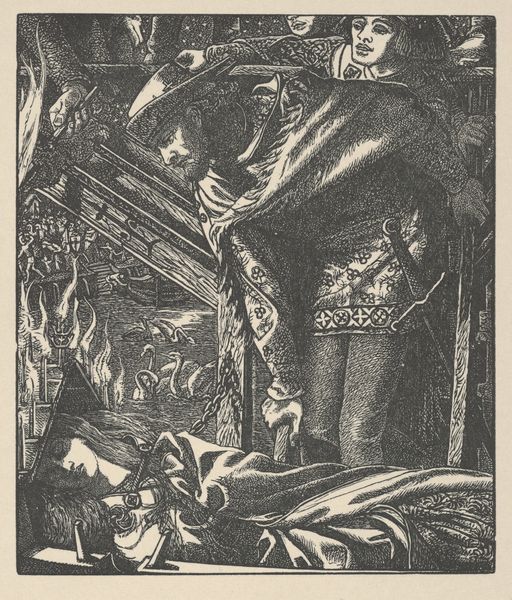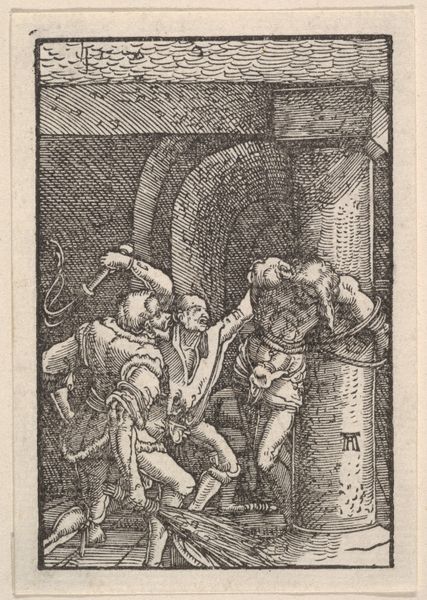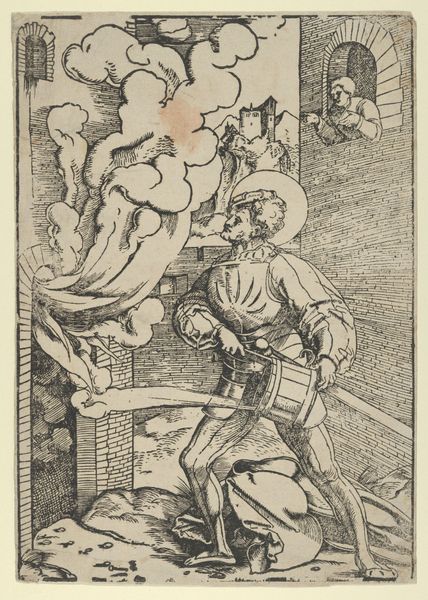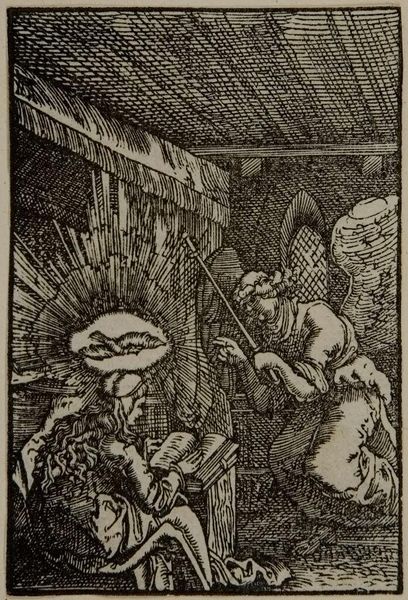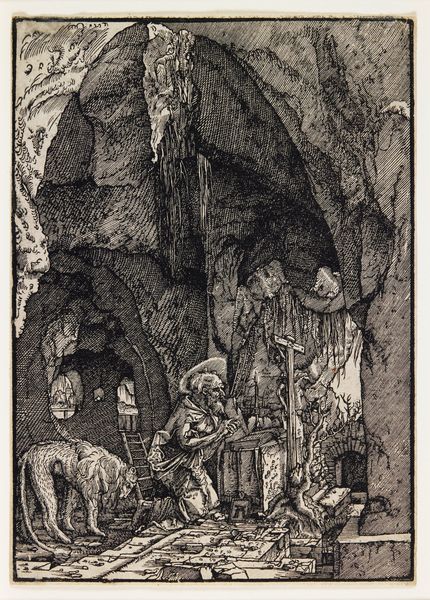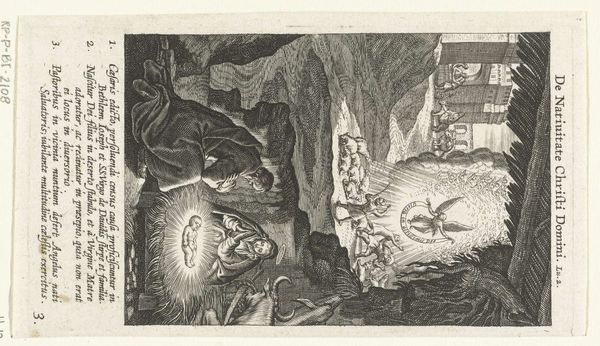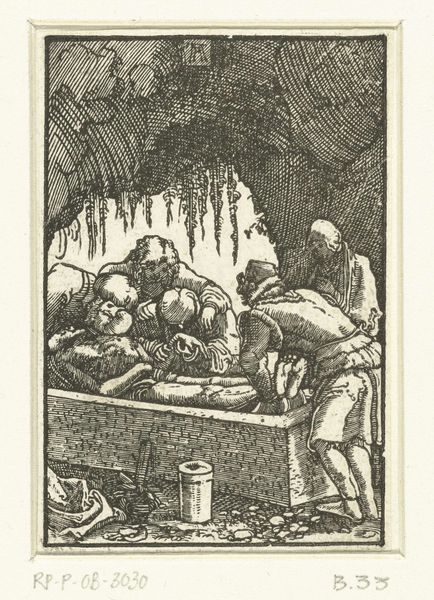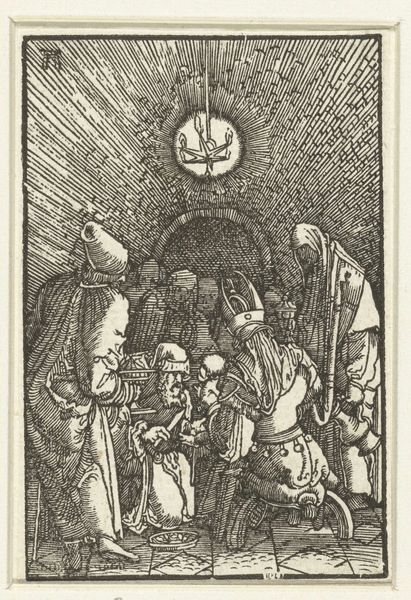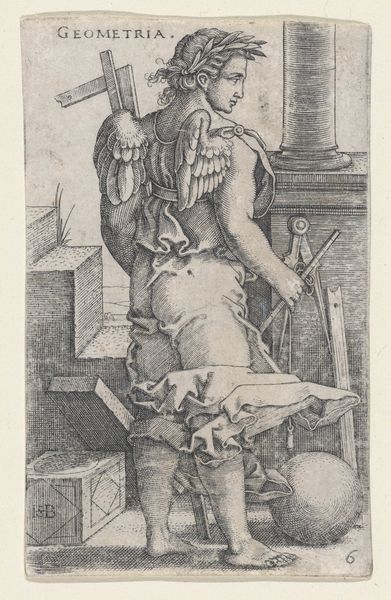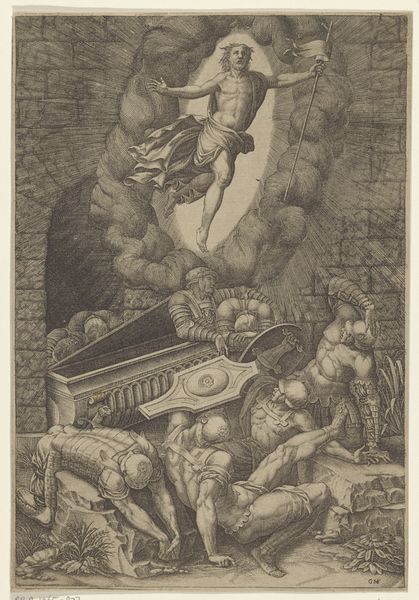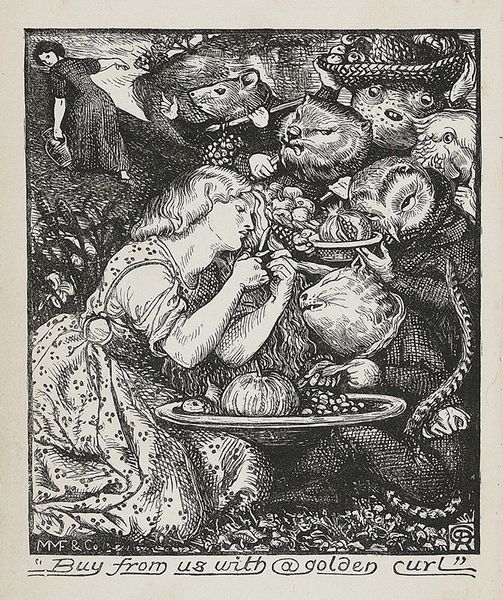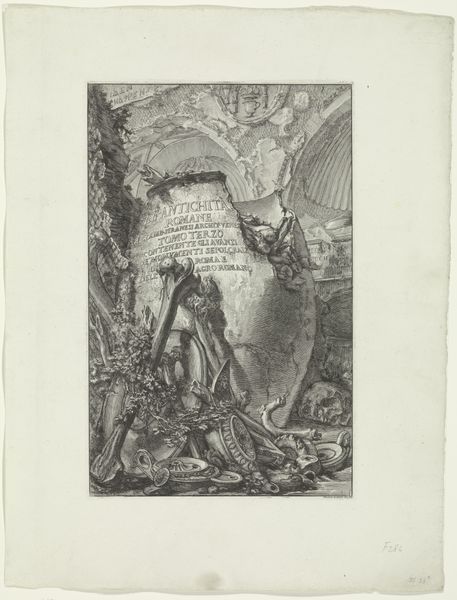
Annunciation, from The Fall and Salvation of Mankind Through the Life and Passion of Christ 1500 - 1538
0:00
0:00
drawing, print, engraving
#
drawing
# print
#
history-painting
#
northern-renaissance
#
engraving
#
virgin-mary
Dimensions: Sheet: 3 1/8 × 2 3/16 in. (7.9 × 5.6 cm)
Copyright: Public Domain
Curator: This is "Annunciation, from The Fall and Salvation of Mankind Through the Life and Passion of Christ," an engraving created by Albrecht Altdorfer between 1500 and 1538. Editor: The first thing that strikes me is the sheer amount of detail packed into such a small space, especially the way the lines create dramatic contrasts between light and shadow. It feels almost claustrophobic, yet undeniably powerful. Curator: Altdorfer was a key figure in the Northern Renaissance, and his prints played a significant role in disseminating religious imagery to a wider audience. Engravings like these were far more accessible than paintings. Editor: It makes you think about how these images functioned then. This wasn't just about devotional representation; it was also about power, social structures, and the way these images shaped people’s understanding of religious stories and their place within that narrative. I can't help but think how much influence these prints had over gender roles too. Curator: Indeed. Consider the institutional framework surrounding this image. The Church was the primary patron of the arts and heavily influenced the subject matter and interpretation of these works. Altdorfer was part of that system. Editor: Yet, the way he rendered the angel, so dynamic and almost unsettling in the cramped space, hints at something more complicated than simple piety. What are they doing holding that baton? What does the presence of that object signal in relation to Mary? Does it act as an active part of the Annunciation scene? The composition pushes back against purely passive readings. It encourages active reflection. Curator: That tension is part of what makes it so compelling. The print's historical impact lies in its role as both an instrument of religious authority and, perhaps unintentionally, a catalyst for personal interpretation. Editor: Looking at it now, centuries later, the image still holds the potential to spark critical questions about faith, power, and representation. Thanks to its location here at the Metropolitan Museum, it can do that and more for those open to viewing it and interpreting Altdorfer's intent for a contemporary world. Curator: Ultimately, understanding these images means grappling with their multifaceted legacy within their society. Editor: And by using theory as another framework, it opens doors to examine and discuss our legacy as a global community.
Comments
No comments
Be the first to comment and join the conversation on the ultimate creative platform.
